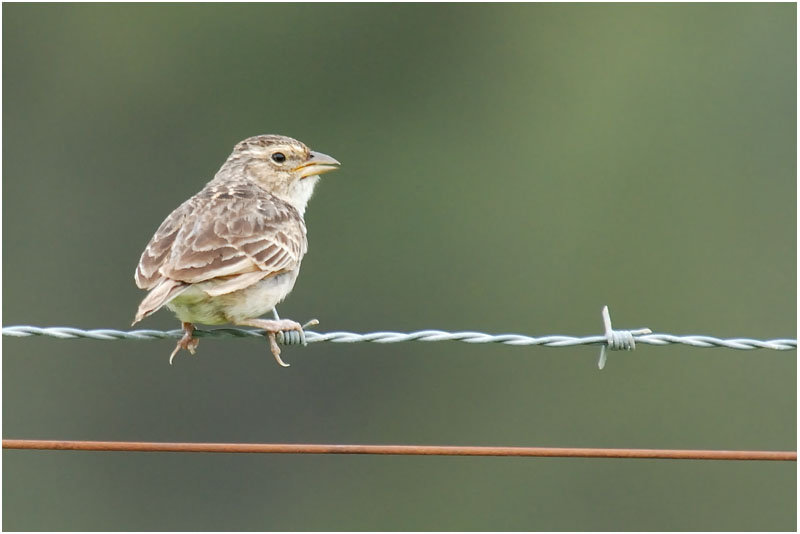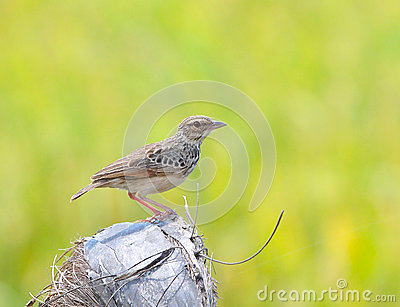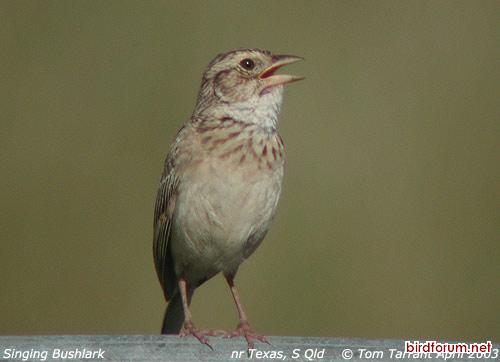
Mirafra javanica
TAXONOMY
Mirafra javanica Horsfield, 1821, Java.
OTHER COMMON NAMES
English: Singing bushlark; French: Alouette de Java; German:
Horsfieldlerche; Spanish: Alondra de Australiana.
PHYSICAL CHARACTERISTICS
4.7–5.9 in (12–15 cm); 0.7 oz (20 g). Plumage inconspicuous
other than rufous wing patch, sexes alike.
DISTRIBUTION
Myanmar, southern and central Thailand, Indochina, Philippine
Islands, Kalimantan, Java, Bali, Lesser Sunda Islands, local
in New Guinea, northwestern, northern, eastern, and southeastern
Australia.
HABITAT
Open grassland with scattered bushes, salty marshes, and edges
of cultivated fields.
BEHAVIOR
Perches on trees and wires. Song includes imitations of other
birds; song-flight takes up to 40 minutes. Forms small groups
outside breeding period. Migratory in southern Australia.
FEEDING ECOLOGY AND DIET
Feeds on seeds and arthropods.
REPRODUCTIVE BIOLOGY
Monogamous. Builds domed nests in shelter of tussocks; in
southern Australia, lays two to four eggs November through
January.
CONSERVATION STATUS
Not threatened.
SIGNIFICANCE TO HUMANS
None known.
Other popular Animals
Photo Gallery of - Australasian lark




 Animalia Life
Animalia Life